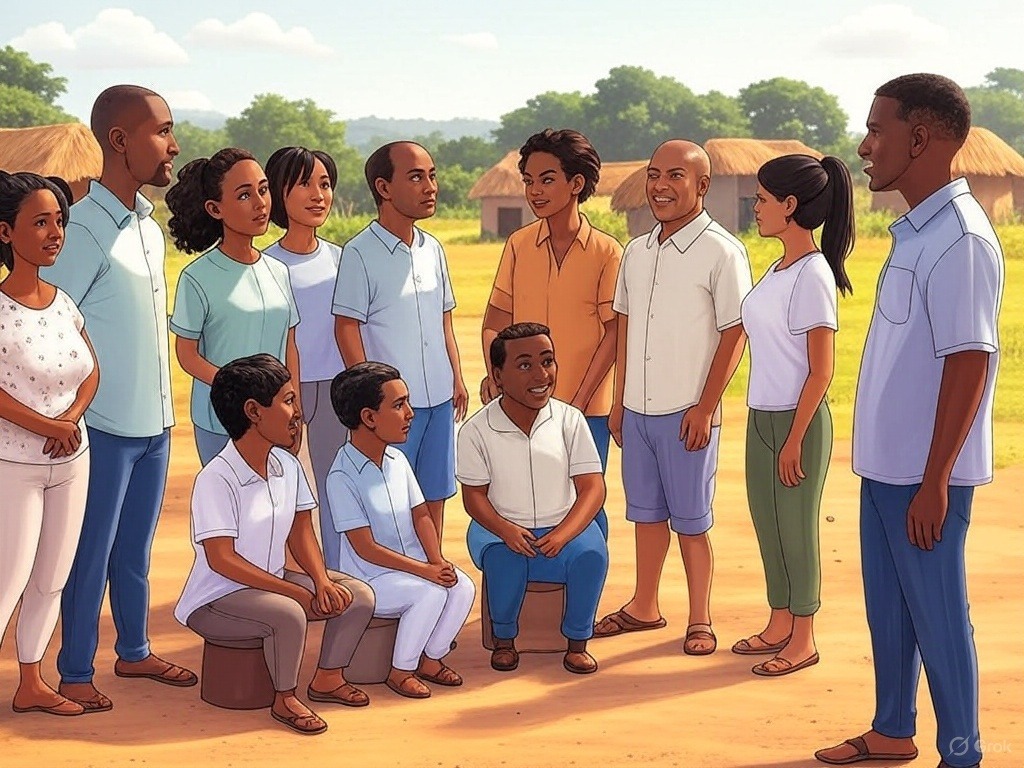
From Chaos to Clarity: The Focus Group Diaries
Imagine this: a shady spot beneath a giant mango tree, a woven mat usually for the ladies. The moderator’s fanning himself/herself with a note book, voice cracking as they try wonder if invited member will show up.
Welcome to the lively, untamed world of focus group discussions, African-style—where opinions clash like thunder, stories wander off like lost goats, and somehow, wisdom (or at least something useful) rises from the commotion. Ever wondered how communities decide if a new herbal soap’s worth the hype or why that project got swapped for another? Hang tight—this is the insider scoop, spiced with a dash of local banter!
The goal? To dig into the messy, unfiltered thoughts of real humans. Surveys can tell you what people think, but focus groups reveal the why—and trust me, the “why” is where the good stuff hides. Like, “I’d buy this shampoo, but the bottle looks like it’s judging me.” Gold.
Let’s kick things off with a truth bomb: pulling together a focus group in an African village is like trying to herd guinea fowl during a rainstorm—tricky, and full of surprises. Deep in the village, under the watchful arms of a mango tree, the idea of gathering folks to chat about anything—be it a new borehole pump or a fancy millet-grinding machine—comes with its own wild set of hurdles. Buckle up, because before the banter even begins, you’ve got to dodge some serious village vibes.
The Rocky Road to Rounding Up a Crew
First off, there’s the fear factor. Word spreads fast when strangers roll into town with clipboards and questions—“Who are these people, and why do they care about my opinion on Maize?” Some folks flat-out refuse to show up, scared it’s a trap or a juju ploy. You can’t blame them—history’s left a long shadow, and trust isn’t handed out like soda at a wedding.
Then there’s the handout hustle. In a place where every grain counts, plenty of villagers figure, “If I’m sitting here yapping, where’s my reward?” They’re not wrong to wonder—data collectors often dangle promises of freebies like soap bars or a sack of rice. But when the goodies don’t materialize, you’ve got a kinyebwa faster than you can say “groundnut stew.” Suddenly, the moderator’s less a facilitator and more a negotiator in a palm-wine standoff.
And don’t get me started on the spy suspicions. In tight-knit villages, any outsider asking questions can spark whispers of government snooping. “Are they tax collectors? Spies for the MP’s rival? Or worse—politicians fishing for votes?” One elder might squint and mutter, “I’ve seen this before—next thing you know, they’re counting our chickens!” Good luck convincing them it’s just about feedback on a solar lantern when they’re side-eyeing you like you’ve got a hidden badge.
From Chaos to Conversation
So, picture the scene once you’ve finally coaxed them in: a shady spot beneath that mango tree, ladies perched on woven mats, and men standing just incase they sense danger. The moderator’s fanning himself with a note book, voice hoarse as he tries to start conversation. Welcome to the lively, untamed world of focus group discussions, African-style—where opinions clash like thunder, stories wander off like lost goats, and somehow, wisdom (or at least something useful) rises from the commotion.
The Juicy Benefits Focus groups are the espresso shot of qualitative research—small, intense, and packed with flavor. They’re perfect for:
- Testing Ideas: Want to know if your glow-in-the-dark toothpaste is a hit or a horror show? Ask a focus group. (Spoiler: Someone’s gonna say it’s “creepy but cool.”)
- Sparking Creativity: Participants toss out wild ideas—like toothpaste that doubles as a nightlight—that might actually work.
- Reading the Room: You’ll see body language, hear tone, and catch the vibe in ways a multiple-choice survey never could.
Thinking of hosting your own focus group? Here’s the cheat sheet:
- Pick Your Crew: Aim for diversity—age, background, whatever—so you’re not just hearing echoes of the same opinion.
- Set the Scene: Comfy chairs, good snacks (no one’s spilling tea over stale pretzels), and a chill vibe.
- Ask Fun Questions: “If this product were a celebrity, who’d it be?” beats “Rate this from 1-10.”
- Record It: You’ll miss half the gems if you’re too busy scribbling.
- Bribe ‘Em: Gift cards, freebies—whatever gets butts in seats.
Pro tip: Keep it under one hour, or you’ll have a mutiny on your hands. People love talking, but they love leaving more.
Real Talk: The Stool Scandal: A Quick Tale from Karamoja
An evaluation team rolled into the dusty outskirts of Uganda’s Karamoja region, ready to chat up the locals about an existing project. First shock? The Karamajong dress code—maximum, bold, and a far cry from their city khakis. But the real kicker came with the stools. In Karamoja, men strut around with tiny stools slung over their shoulders—everyone, even visitors, is expected to BYOS (Bring Your Own Stool). One big rule: if a woman sits on a man’s stool, a bull’s getting slaughtered to cleanse the taboo.
The team, clueless and stool-less, arrived and plopped down on the nearest ones. Cue gasps from the villagers. Luckily, it was just the guys who sat—disaster averted. A woman on that stool? They’d have been haggling over a bull-sized apology. The Karamajong chuckled, the evaluators blushed, and the focus group kicked off with a lesson sharper than any data: respect the stool, or pay the price!
What do you say, reader? Would you join my focus group, or are you too busy perfecting your pineapple pizza rant?
0 Comments Add a Comment?